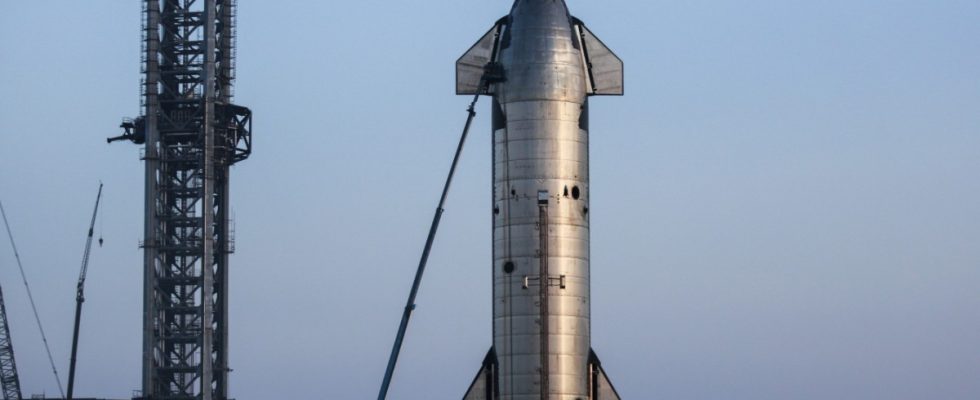Launch dates are such a thing in space travel. Delays can sometimes occur in such a technically and physically demanding undertaking to snatch a steel monster weighing thousands of tons from Earth’s gravitational pull and launch it into space. Especially when it comes to a new spaceship that is to leave Earth for the first time. Just like the US company Space-X with their Starship plans.
The American writer Norman Mailer wrote of a “cauldron of engines” in which embers were blazing when he announced the departure of the Apollo 11 lunar expedition Saturn V-Rocket 1969 in the Lifemagazine and later in his book Of a Fire on the Moon. An “apocalyptic outburst of anger” gripped the spectators at the launch site in Florida after the rocket slowly rose from its “fiery incarnation”.
The test flight should only bring the spacecraft to Hawaii
The impressions at the start of the Starship become that bigger and heavier than that Saturn V and has more than twice as much thrust. it exists from the 69 meter lower stage Super Heavy, fueled by 33 engines called Raptor, and the actual Starship, which measures 50 meters, with six other raptors. And all that with a diameter of nine meters. Also the methane powered one Starship should one day fly to the moon, possibly also to Mars at some point, but that test flight should it initially only lead to the Hawaiian Islands, where the upper stage should splash down in the sea after 90 minutes.
Nevertheless, the enthusiasm of the space fans is enormous. Also because behind the project is Elon Musk’s Californian space company and not the US space agency Nasa. The Starship would be with 5000 tons takeoff weight and 7,590 tons of thrust, the most powerful rocket ever to reach space. With an initial 150 tons of payload capacity beyond orbit, it could significantly reduce transport costs into space. Because it should be reusable and refueled in space, it could even herald a new era in space travel. And it is largely privately financed.
And as far as the delays are concerned: Space-X would have been ready for launch a year ago, but approvals were still pending, among other things, with regard to the environmental compatibility of the launch site in Boca Chica, Texas. After various technical problems, the rocket completed a successful test run with 4,500 tons of fuel in January. During an engine test in February, two of the 33 Raptor drives failed. “But there are still enough engines to reach orbit!” Elon Musk then tweeted.
Elon Musk has a 50 percent chance of success
Since the beginning of April, speculation about an imminent launch of the super spaceship has been wafting through the internet again, since the rocket was on the ramp. There are several indications that this is the case Starship should have taken off on Easter Monday. Websites had referred to information from the US Federal Aviation Administration (FAA), to warnings for shipping or to the fact that NASA had reserved an observation aircraft for that day.
On April 6th fired Musk the speculation then itself: That Starship is “ready for launch next week, pending regulatory approval.” On April 11th announced Space X then the flight test for the following week, the website specifically mentions Monday, April 17th. However, as of Thursday, there was still one FAA approval out of.
But even if it were to come soon: Stefan Schlechtriem, Director of the Institute for Space Propulsion at the German Aerospace Center (DLR) in Lampoldshausen, is skeptical about that Starship already reached orbit this year. Also because there have never been spaceships powered by methane. “The Falcon 9 from Space-X is built on known technology, there it is Starship a completely different number,” he says. “When the box takes off, it comes pretty close to orbit, Elon Musk will be able to do that.” However, he has his doubts, “whether that Starship come back safe,” says Schlechtriem. Maybe Musk will wait a while before starting to increase the chances.
However, Musk himself has warned against setting expectations too high. The chances of not getting into orbit are 50 percent, he said in early March at a Morgan Stanley bank conference. “I guarantee it will be exciting. It certainly won’t be boring.”

